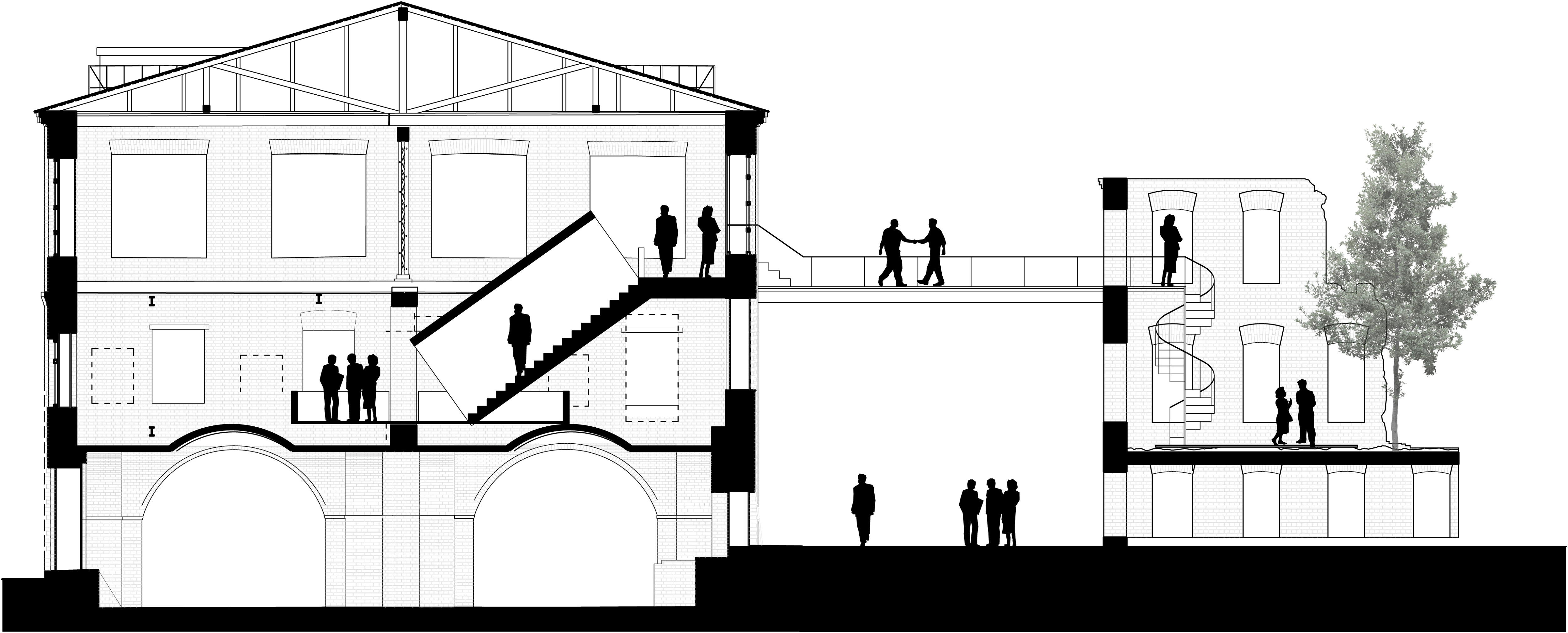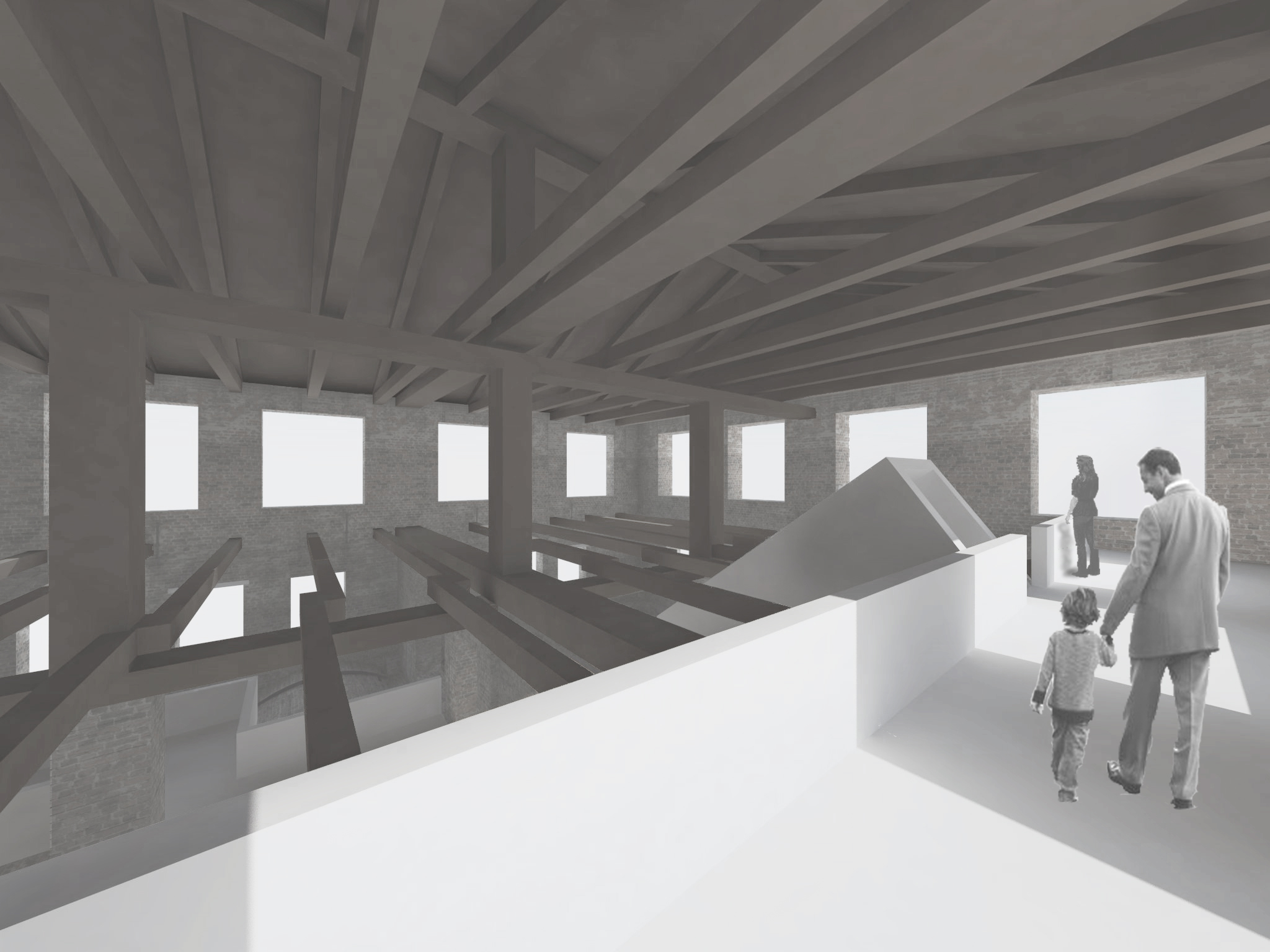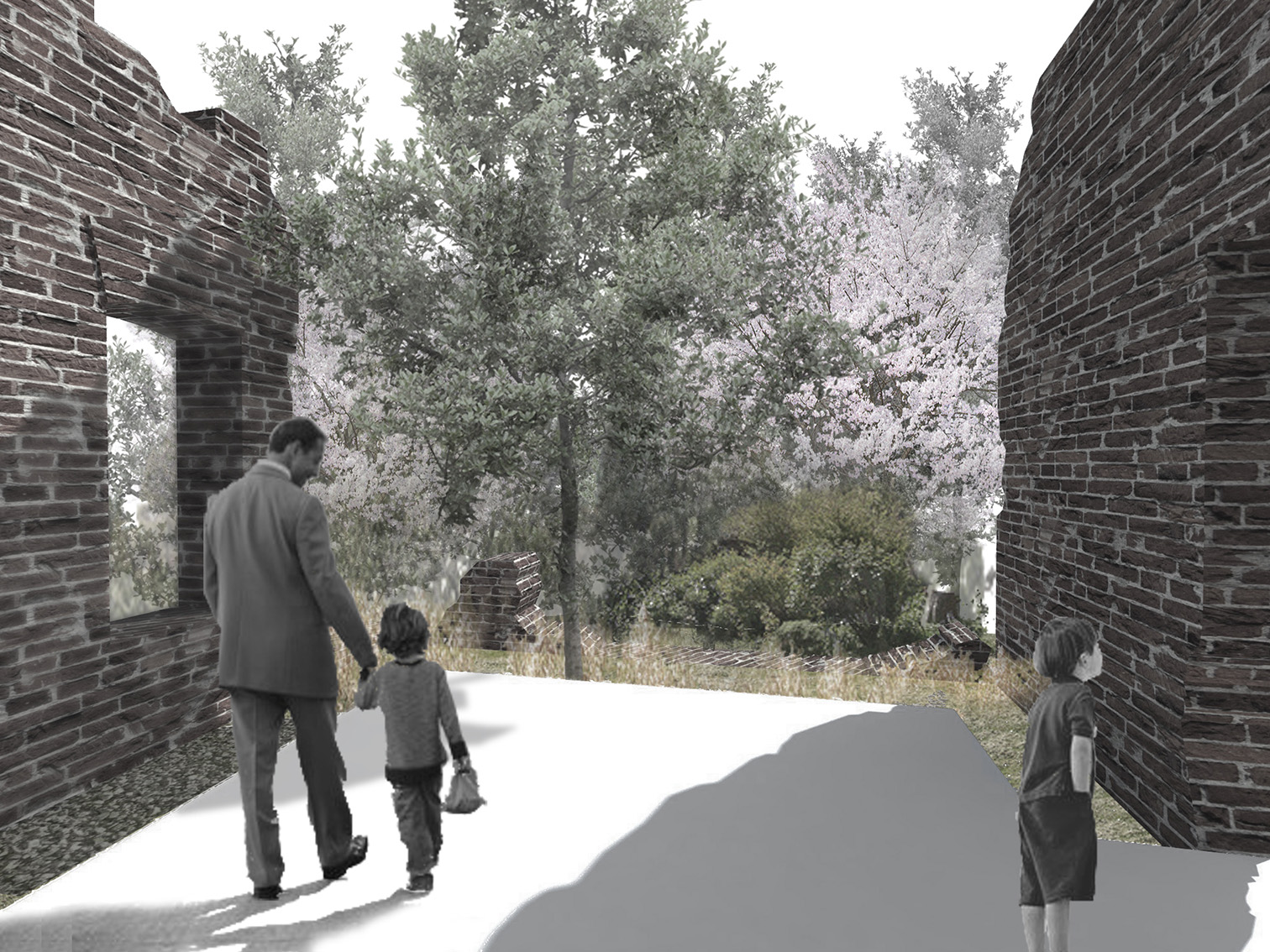Ruin
Project description:
Exhibition demonstrating the design approach and richness of museum's building
Place:
Moscow, Russia
Function:
Cultural
Area:
445 m2
Materials:
Steel structure, gypsum boards, wooden floors, metal plates
Role:Steel structure, gypsum boards, wooden floors, metal plates
Architectural designer, co-author as a member of RDNK architects
An exhibition “Ruin” by RDNK architects was held in the eponymous annex of the Shchusev Museum of Architecture.
This building was erected at the end of 18th century as a part of urban estates ensemble belonging to Talyzin family. It was a stable at those times. In the early 30’s of 20th century “Talyzins house” was transformed into residential purposes building and the annex became a communal apartment.
Since the establishment of the Schusev State Museum of Russian architecture in 1945, the building was forwarded to museum, and in 1948 it was taken under state protection.
In the XX century as a result of state’s neglect to the objects of culture, museum building has fallen into decay, the annex turned into a ruin.
Since 2000 the museum was directed by David Sarkisyan. The idea of using this ruined building as a space for exhibitions belongs to him. Since then, the annex has been called “Ruin” with a capital “R”, which transferred it from economic neglection category to an independent aesthetic and cultural value.
![]()
Together with Schusev museum team, architects from RDNK decided to focus on ruins historical and contemporary value instead of office’s work itself.
Thus, building of Ruin became the main object of exhibition, together with significant examples of abandoned and damaged structures of our civilization.
![]()
Ruin examples
Project “Involvement” was an alternative option for exposing the building’s body — a tool designed to create two different atmospheres, in which there are no barriers for perception.
The first atmosphere is “total contemplation” inside the old Annex. In this part of the journey visitors are on the detached “island” that turns all surrounding space and all it’s parts into an art object.
Then, after a pause (bridge crossing), we can find ouselves in a completely different environment. The most appropriate name for it is “closeness”. Closeness of another ruined building structures to the lively and active modern life.
With such close contact with a visitor ruin becomes an integral part of what is happening at this particular moment. For a person who walked along this way, the concept of “Ruin” must change. It should no longer be considered just as an object passed into oblivion or a pile of useless material...
Ruin is a part of cultural code which still lives in us.

Plan

Section
In collaboration with Narine Tyutcheva, Petr Popov, Mikhail Gayer, Anna Vishneva, Galina Averina, Polina Bush, Silvia Gelain and Aleksey Kudimov







